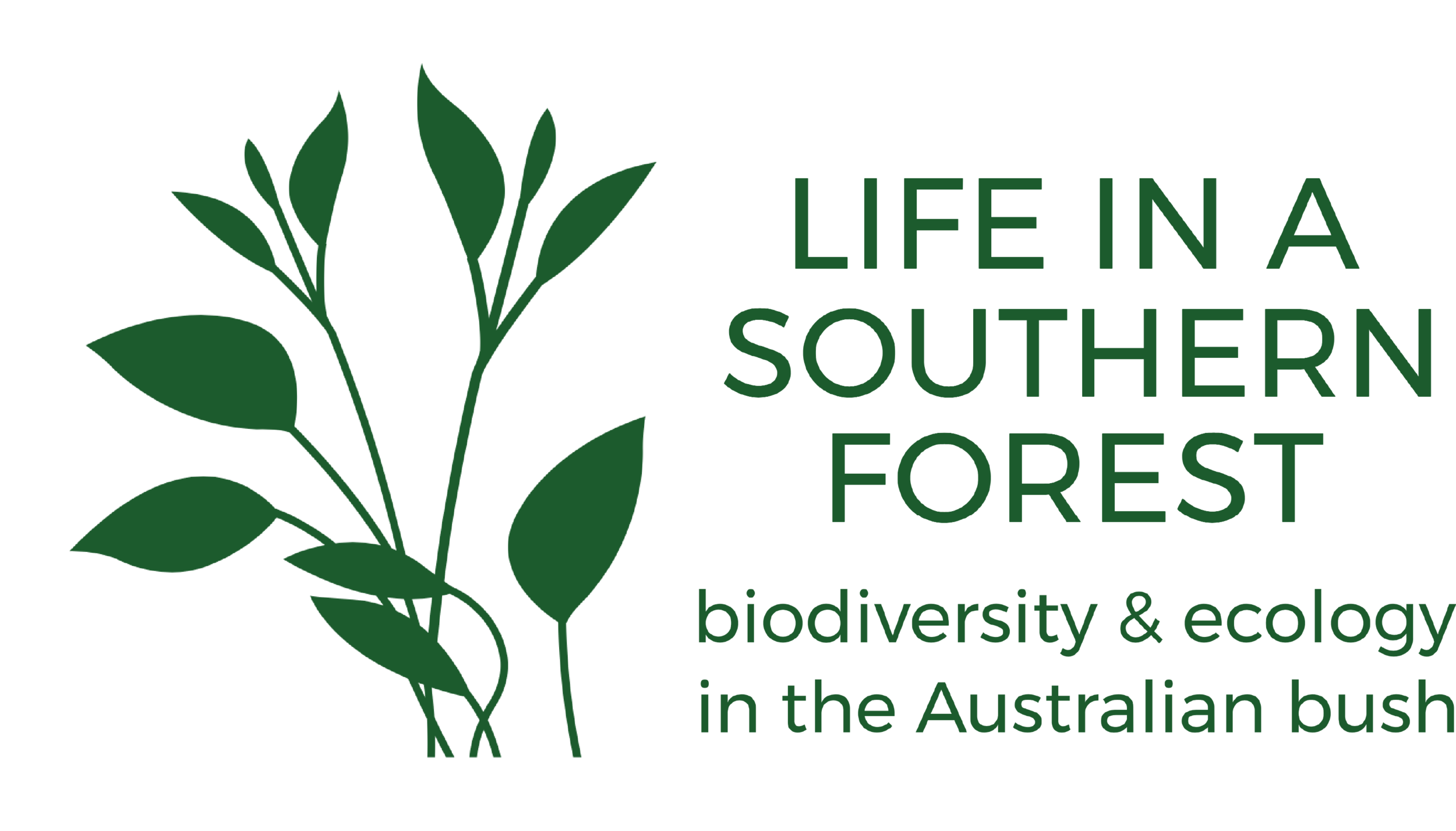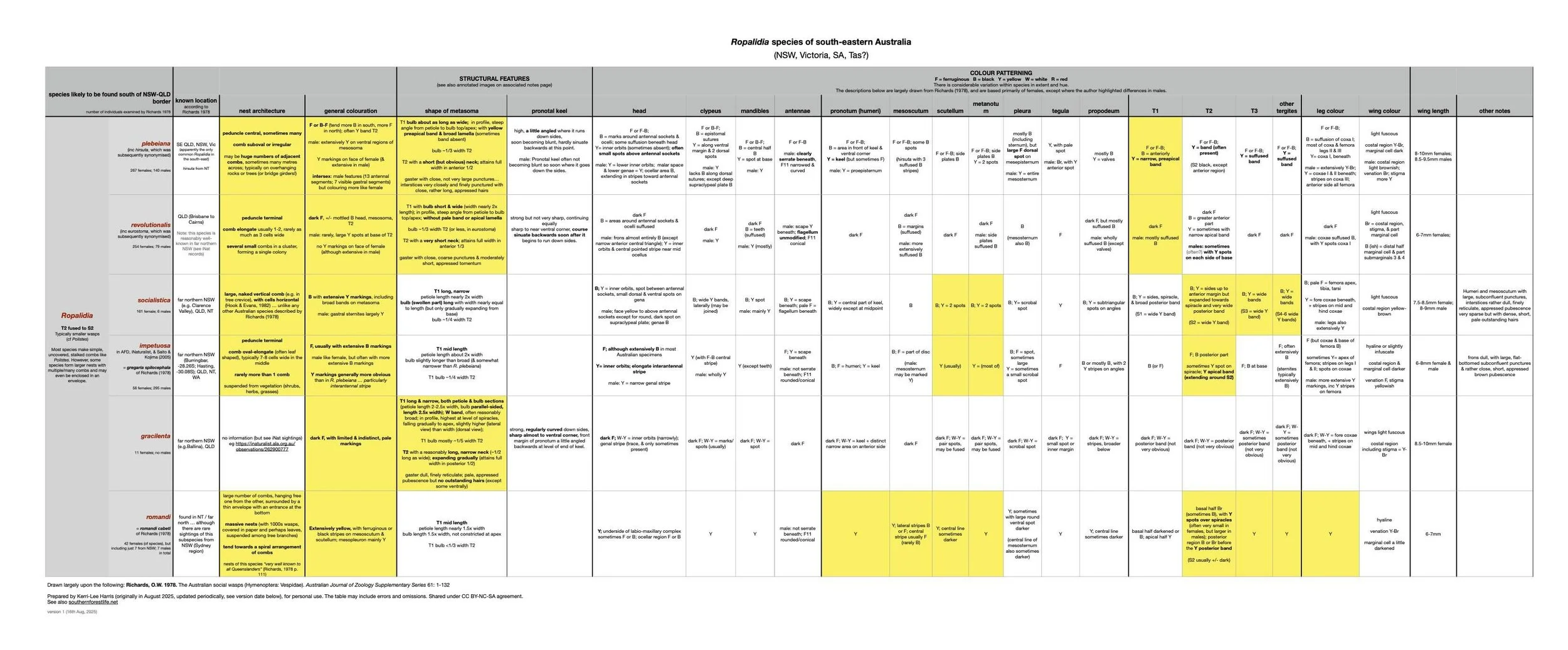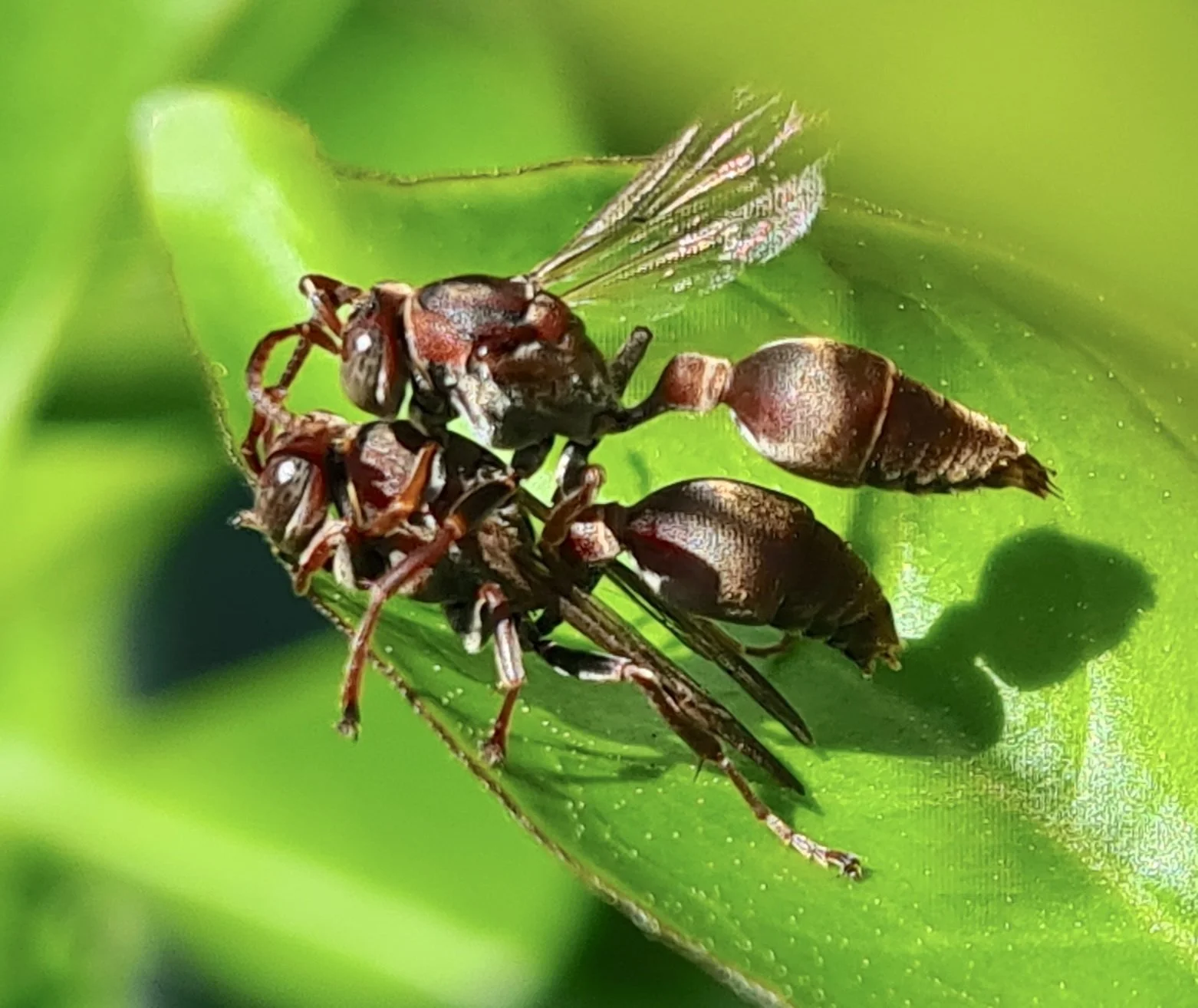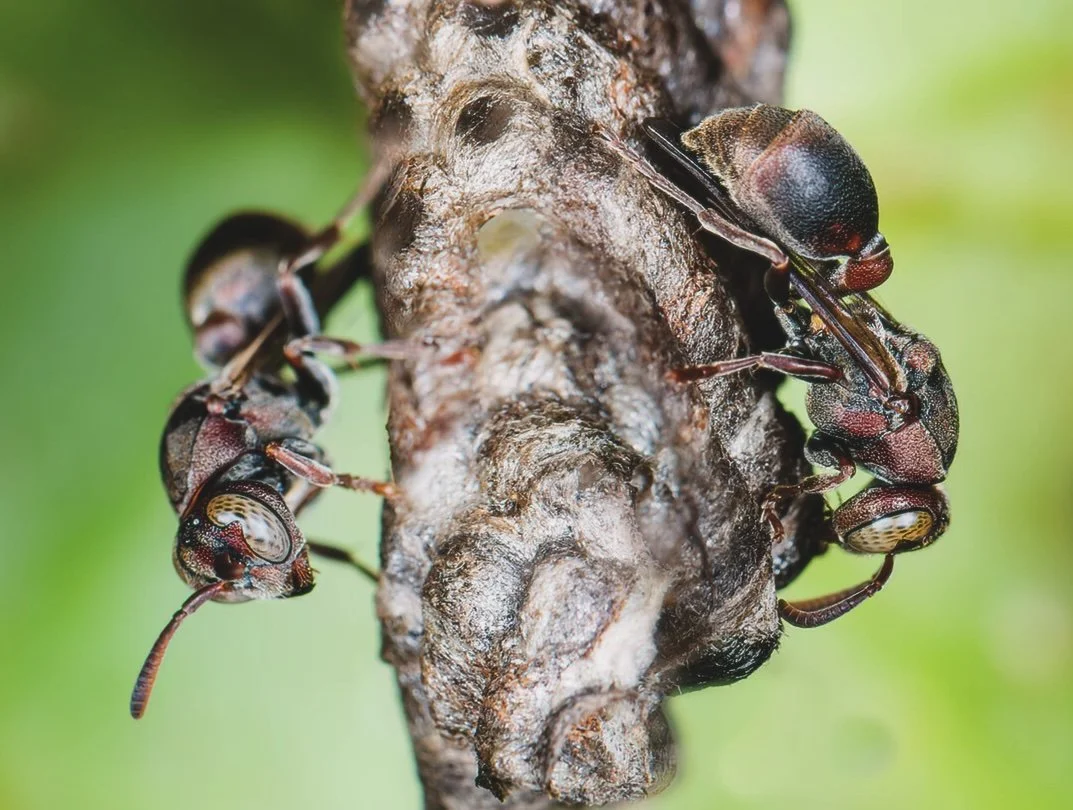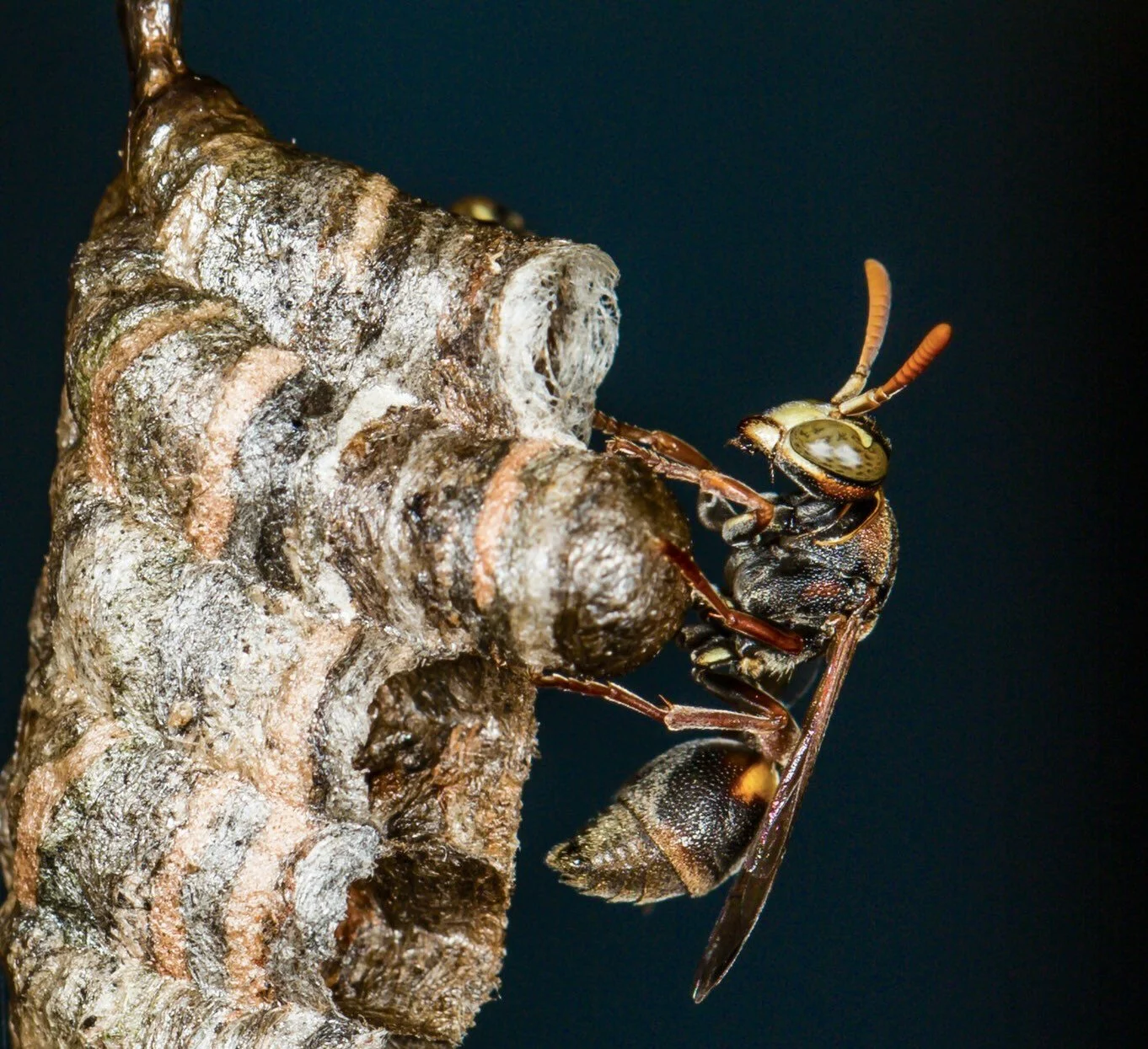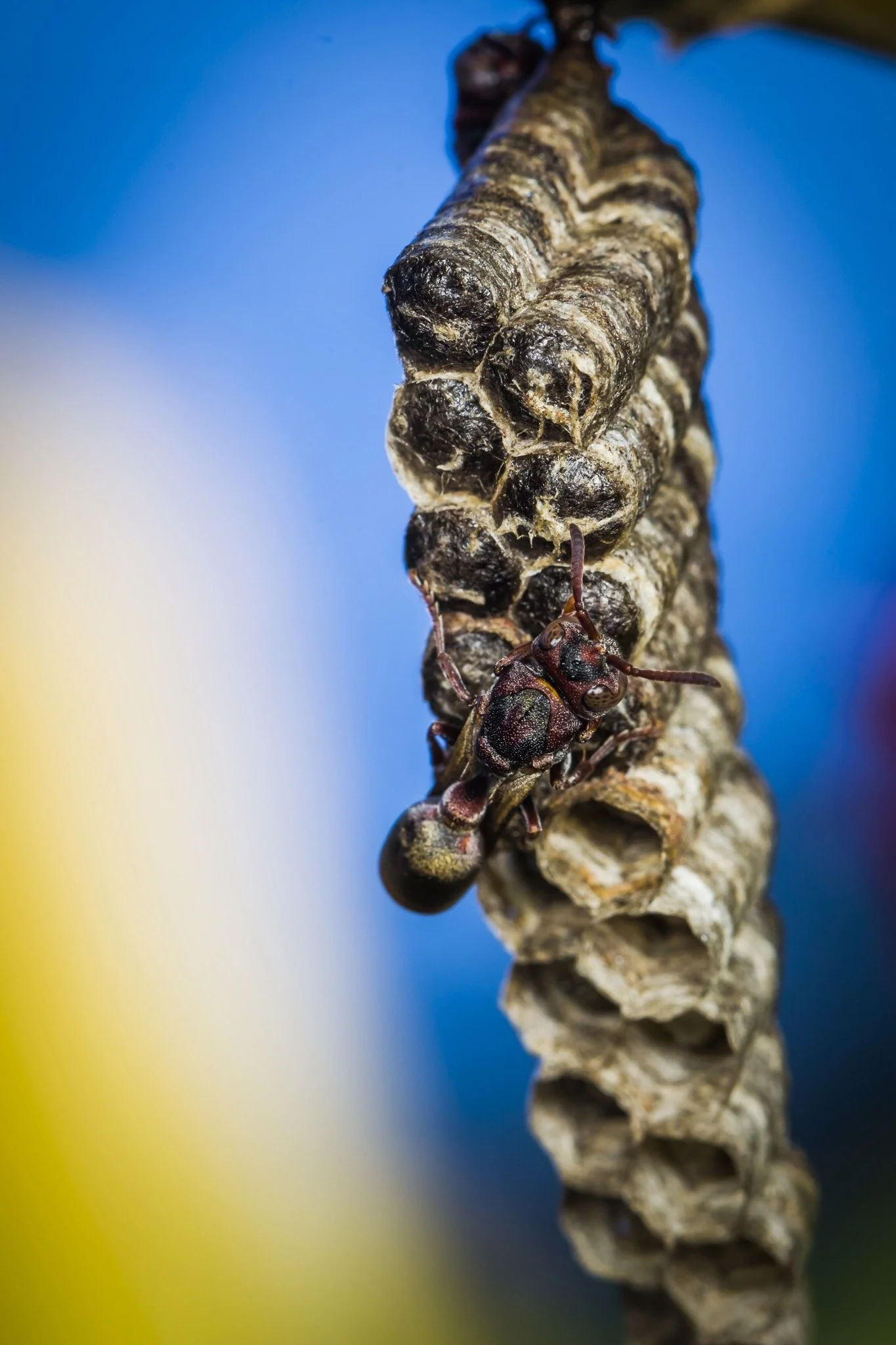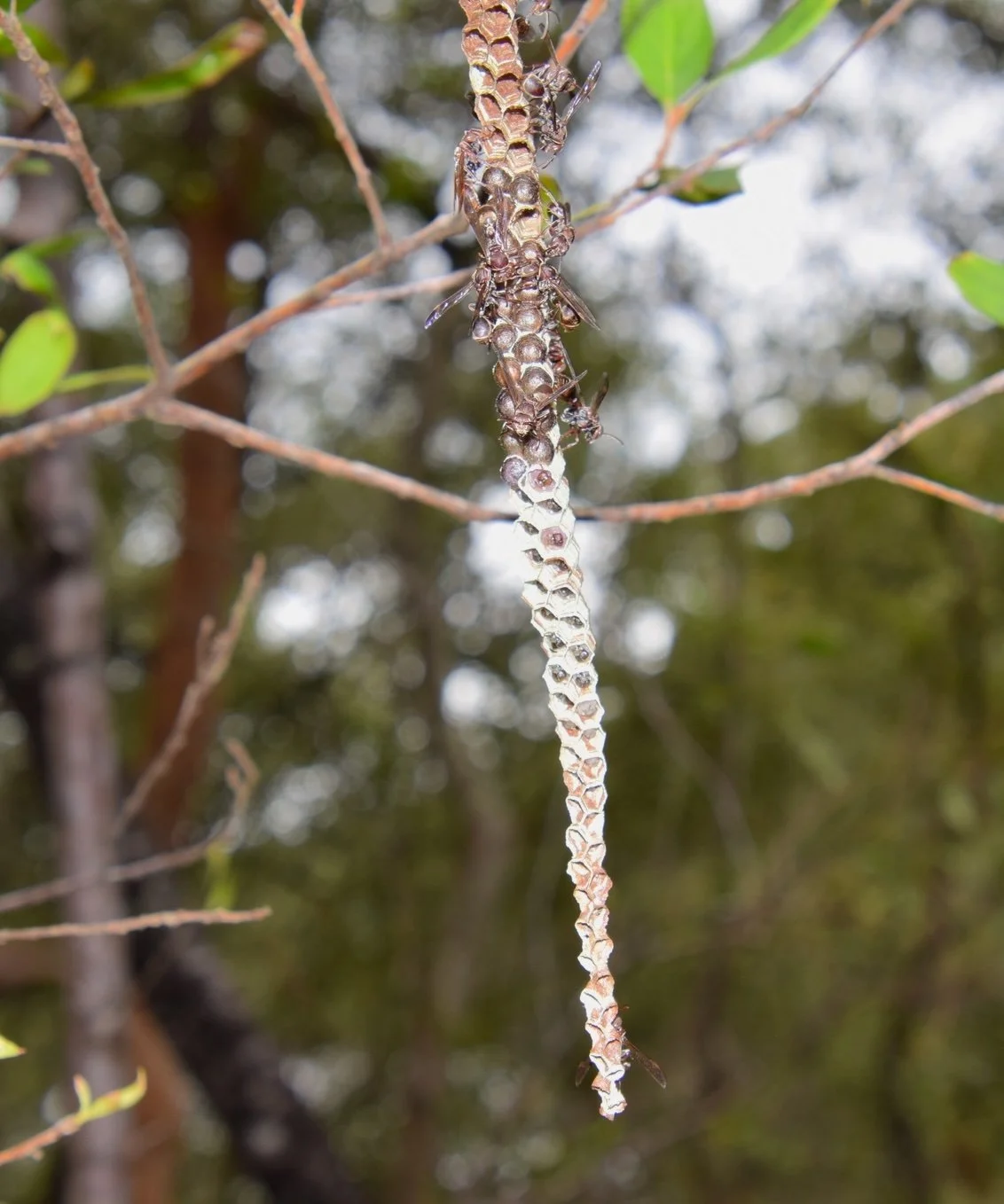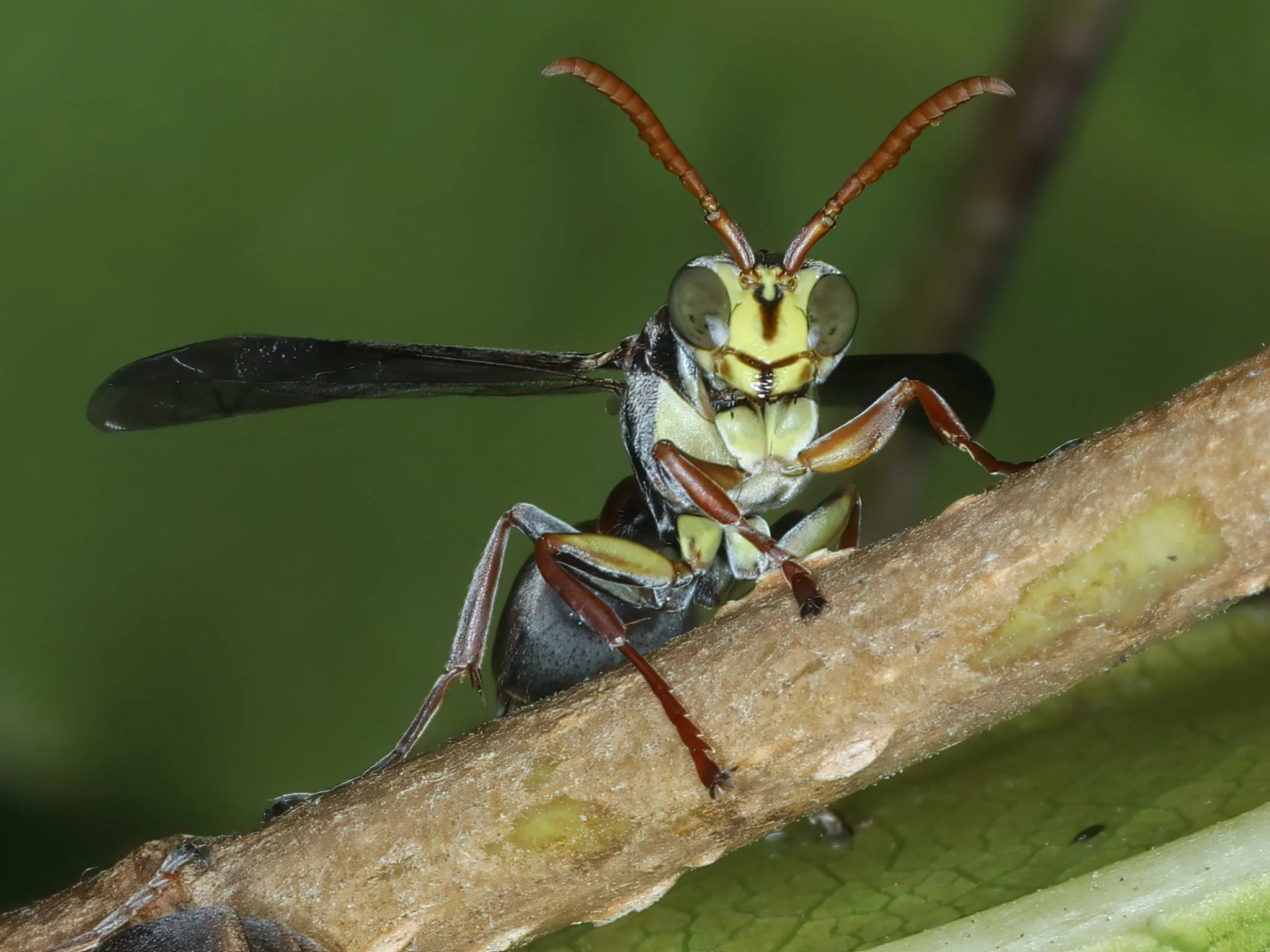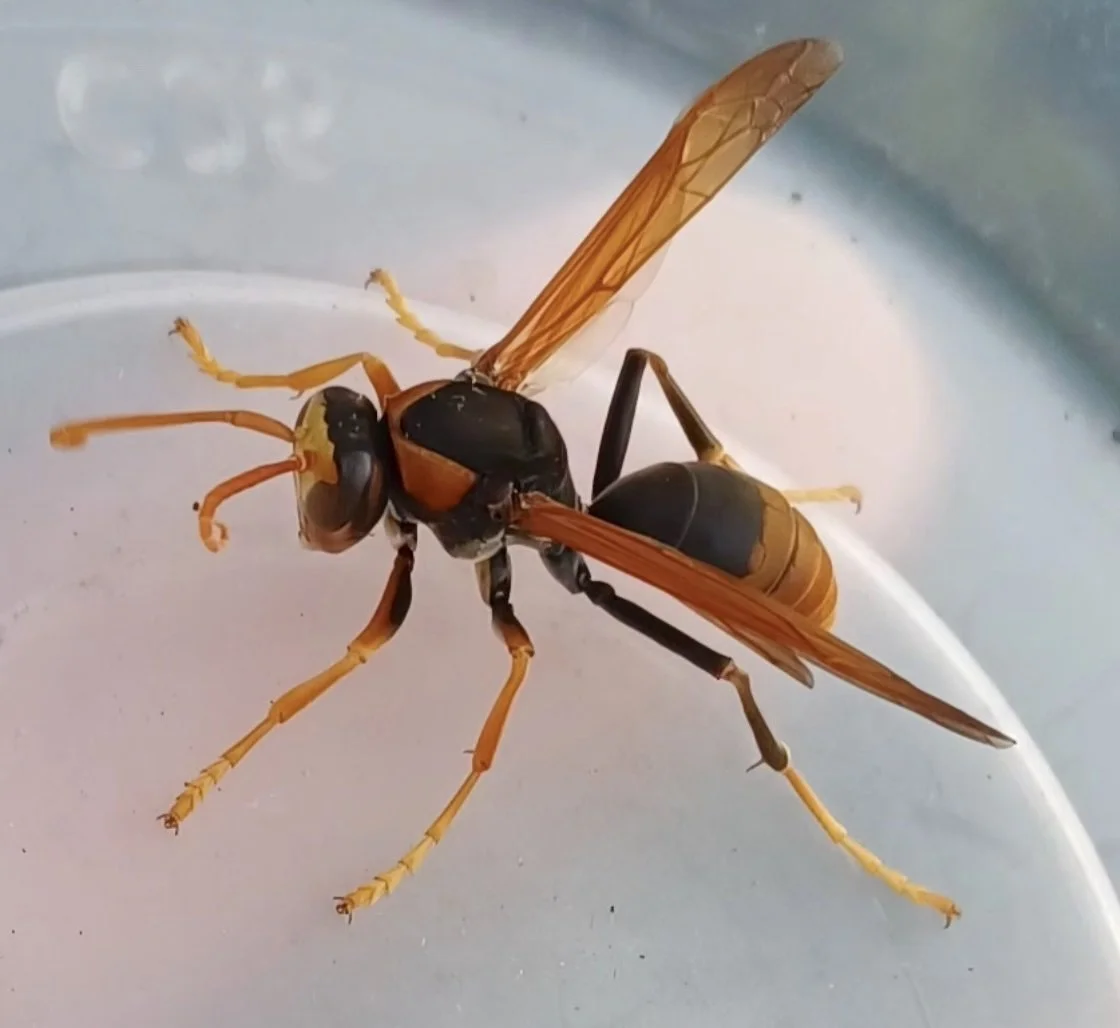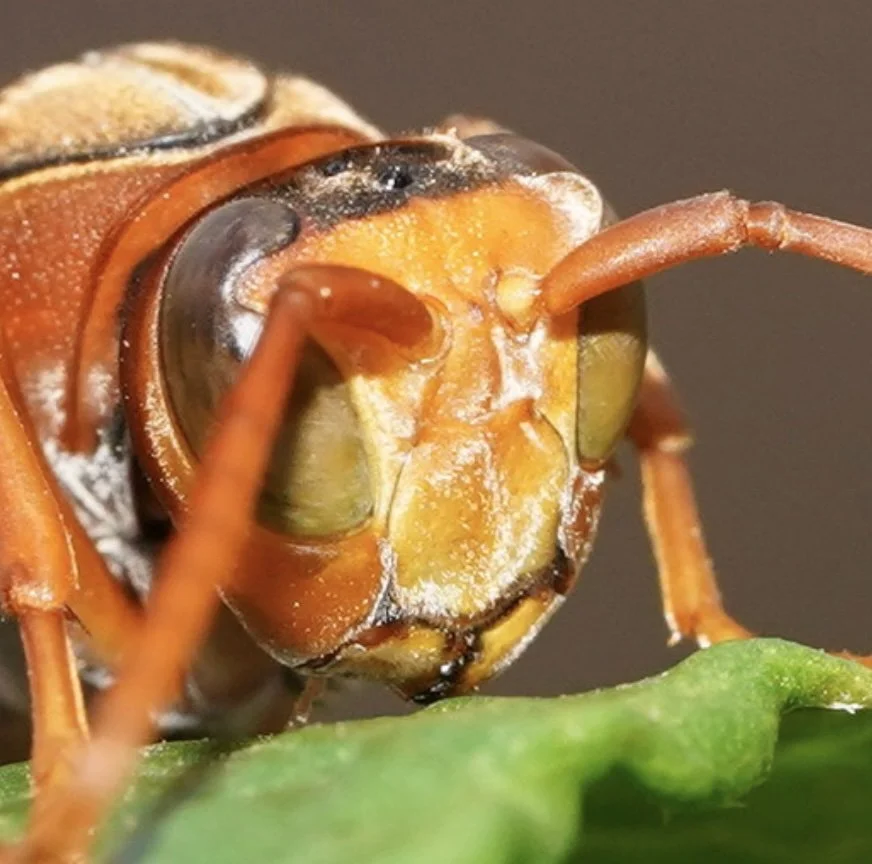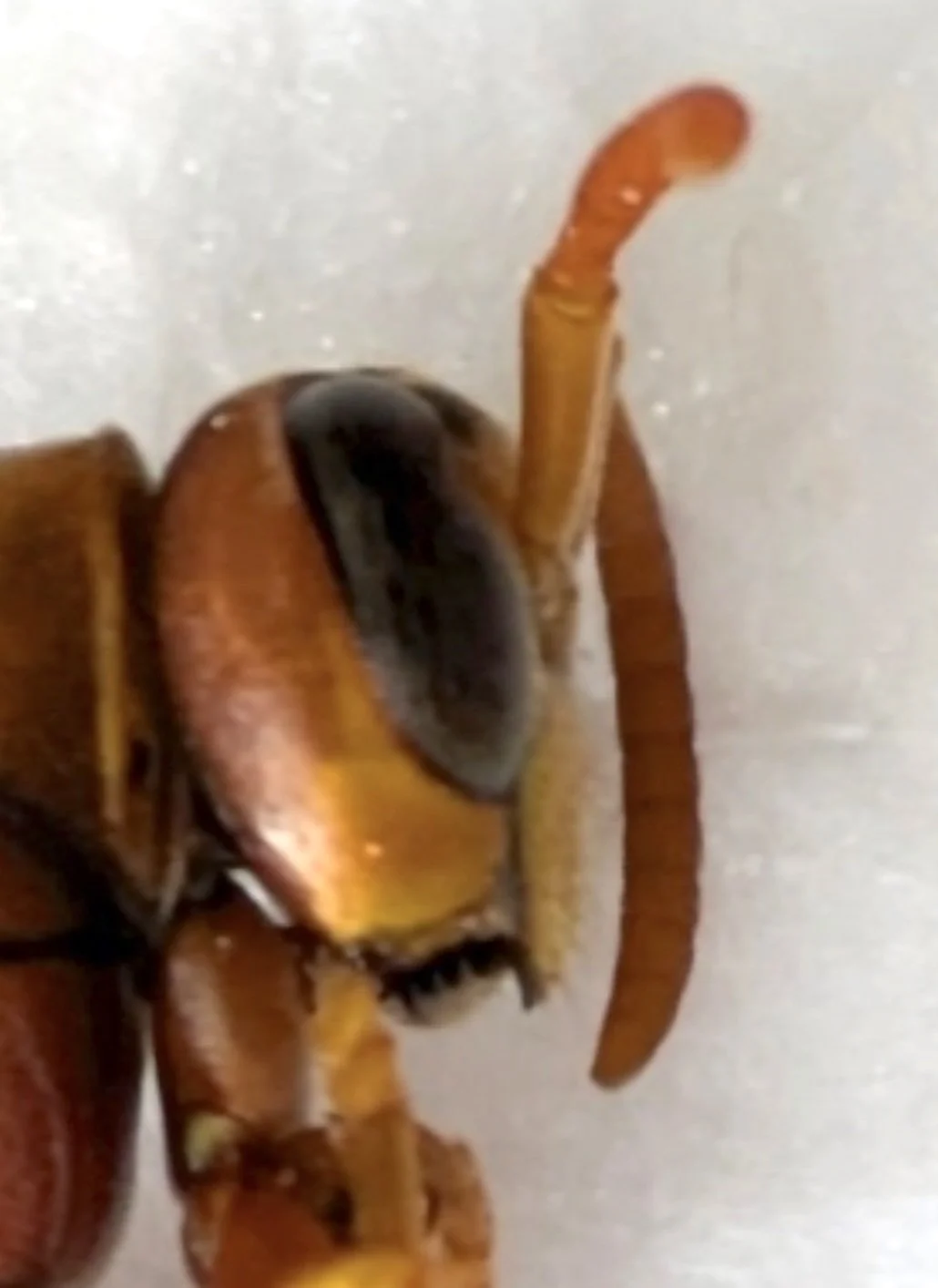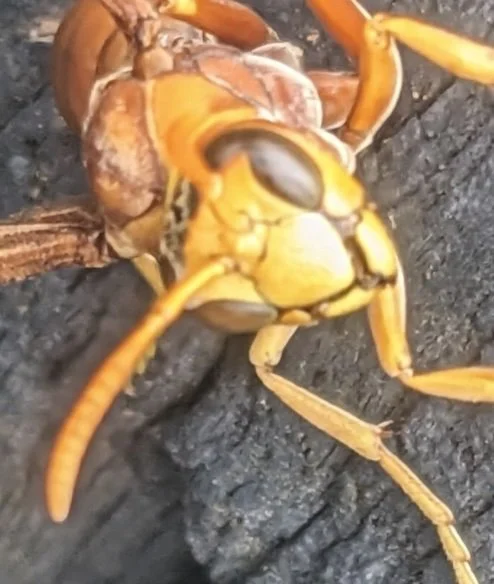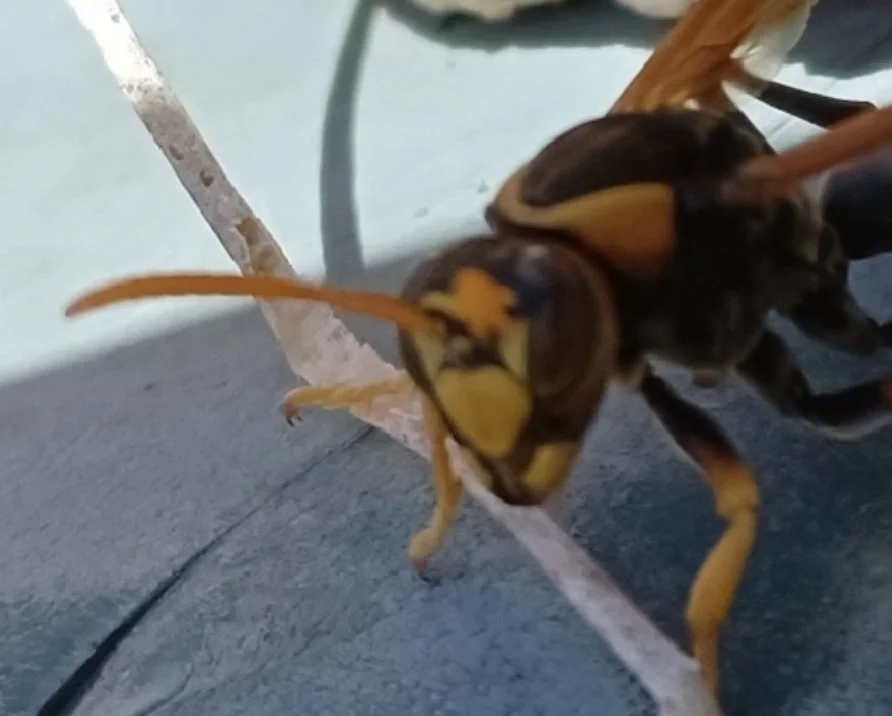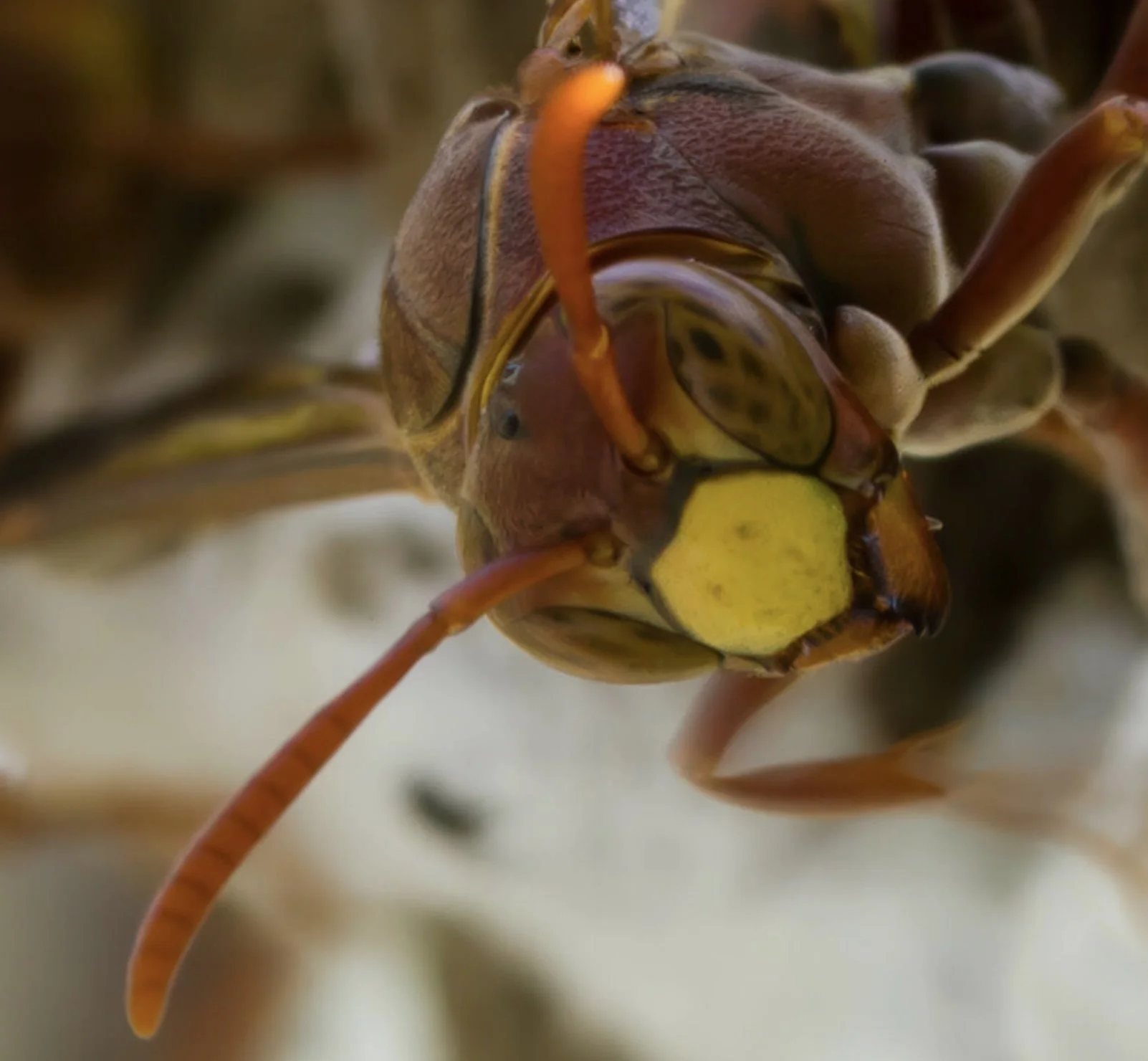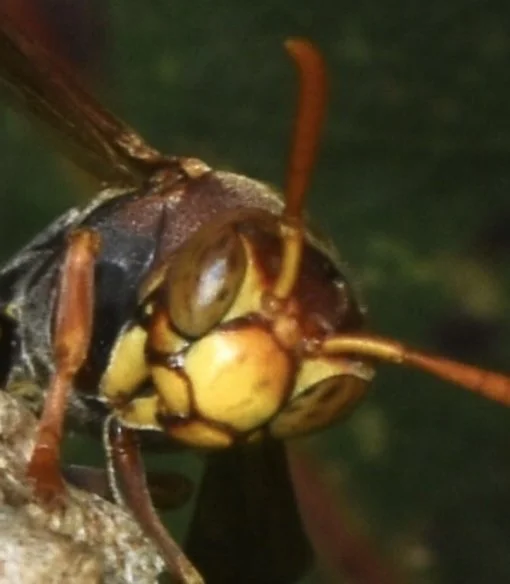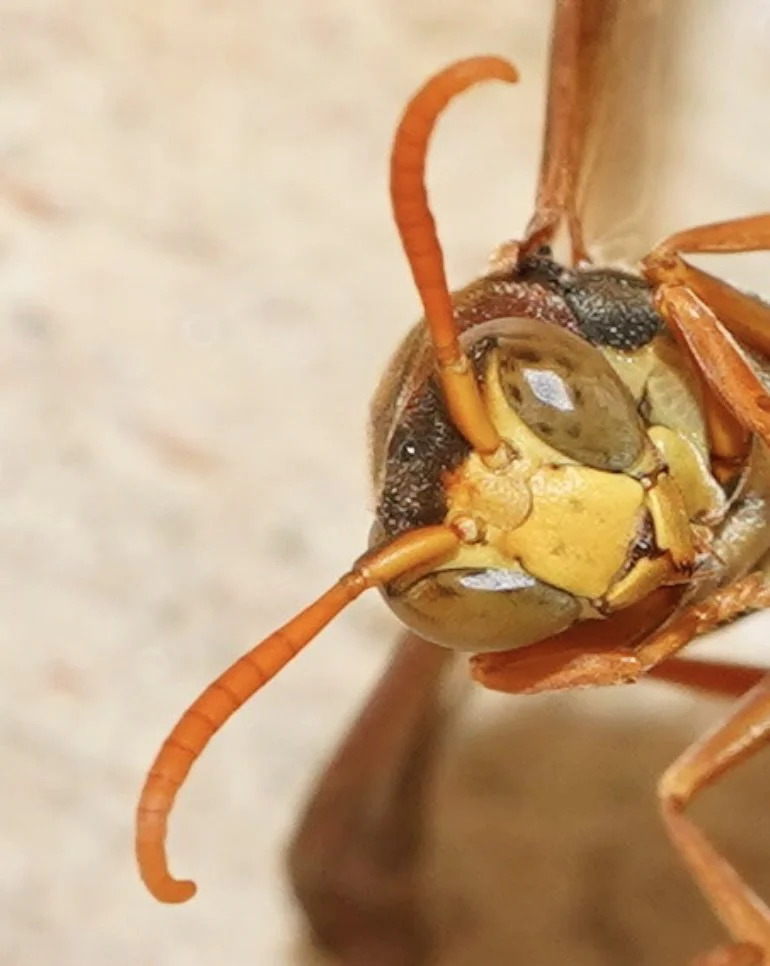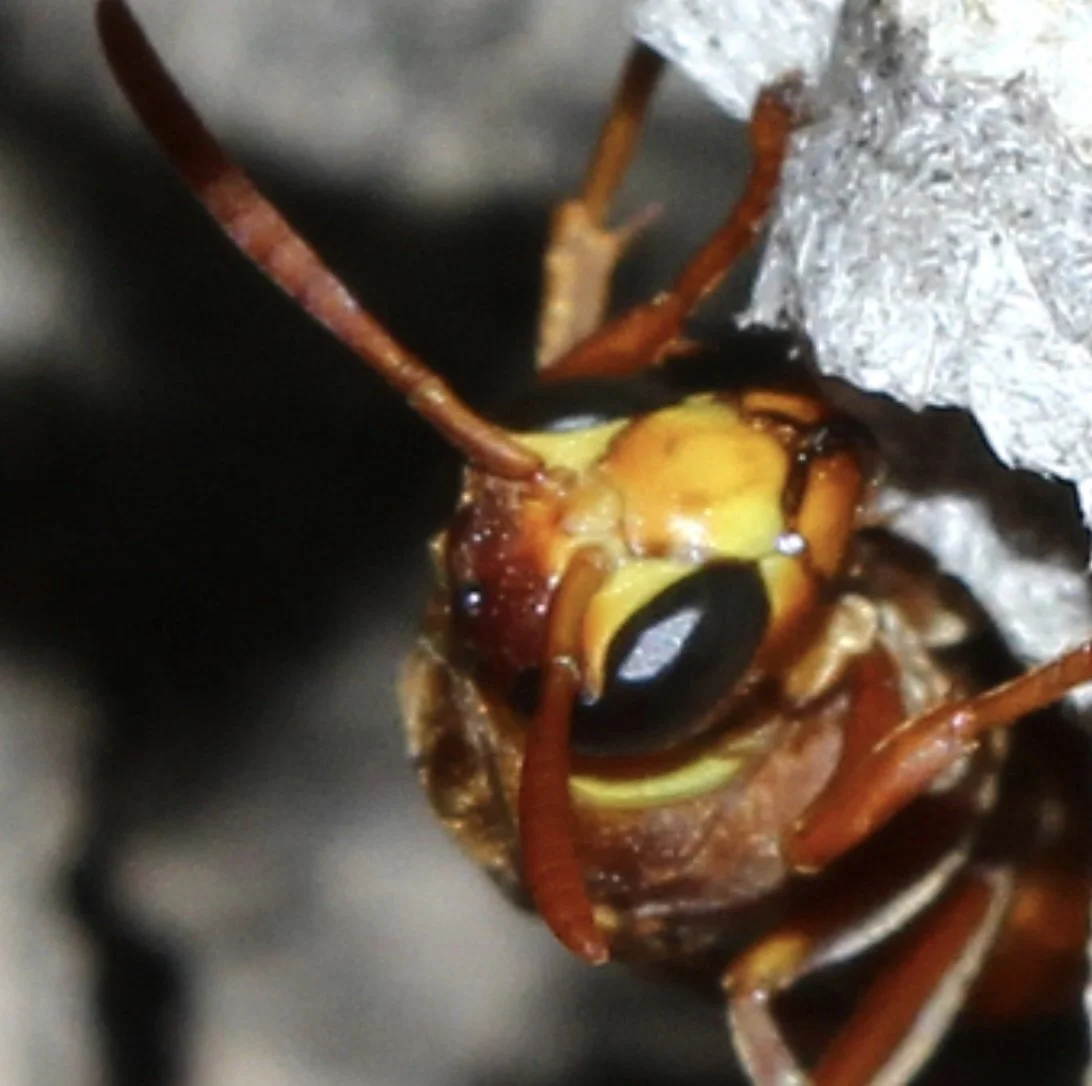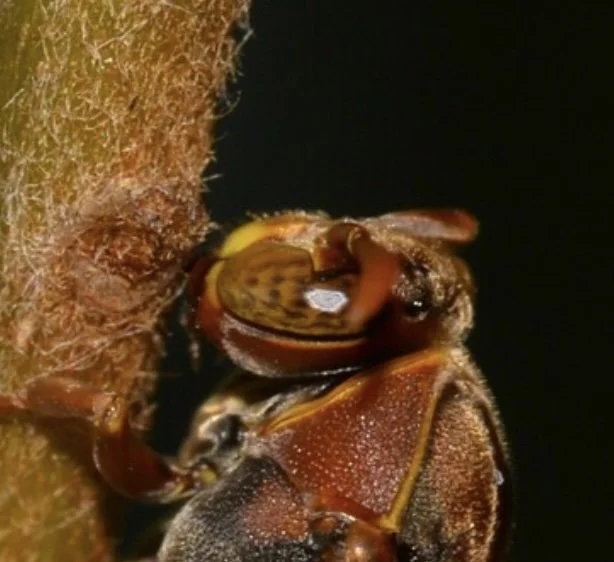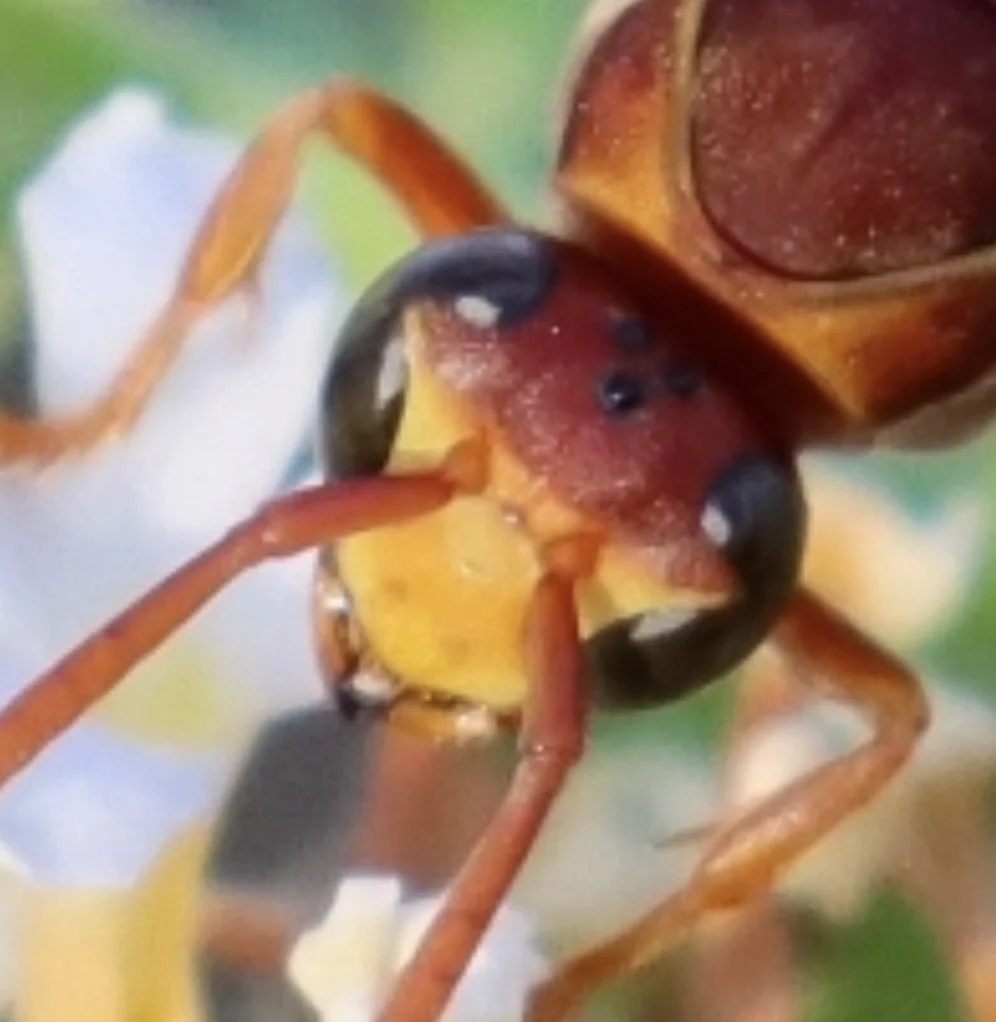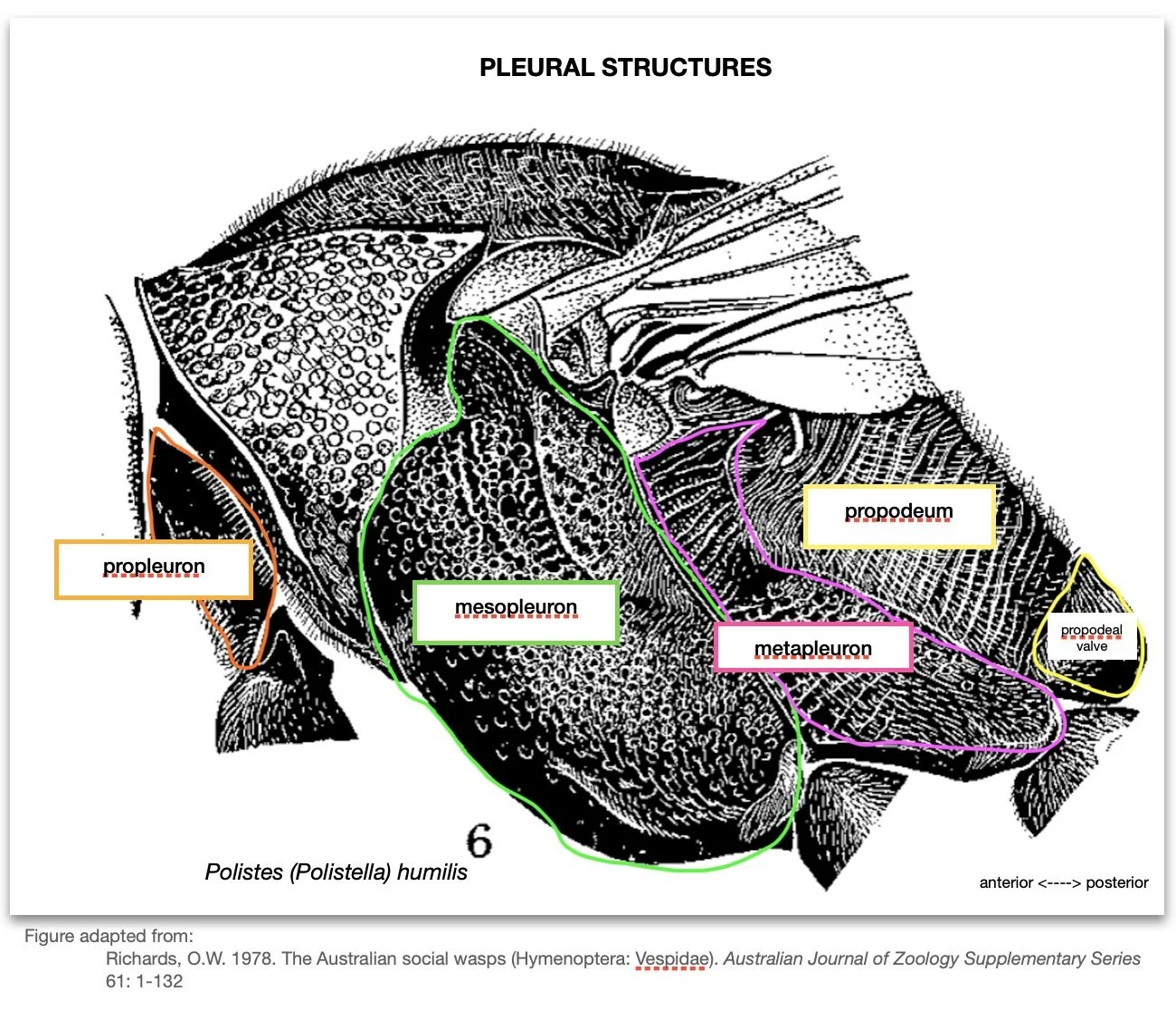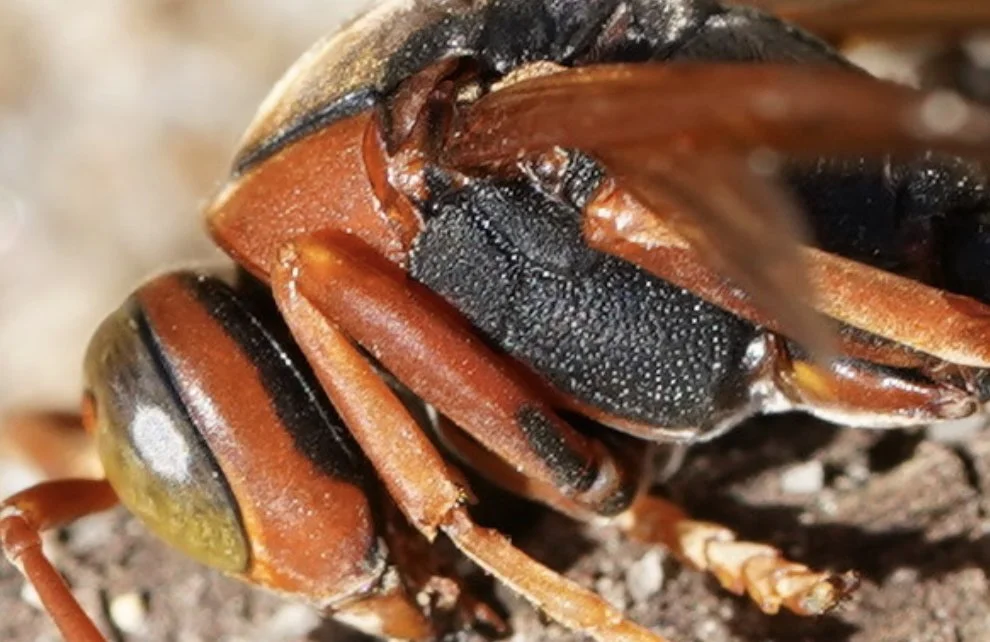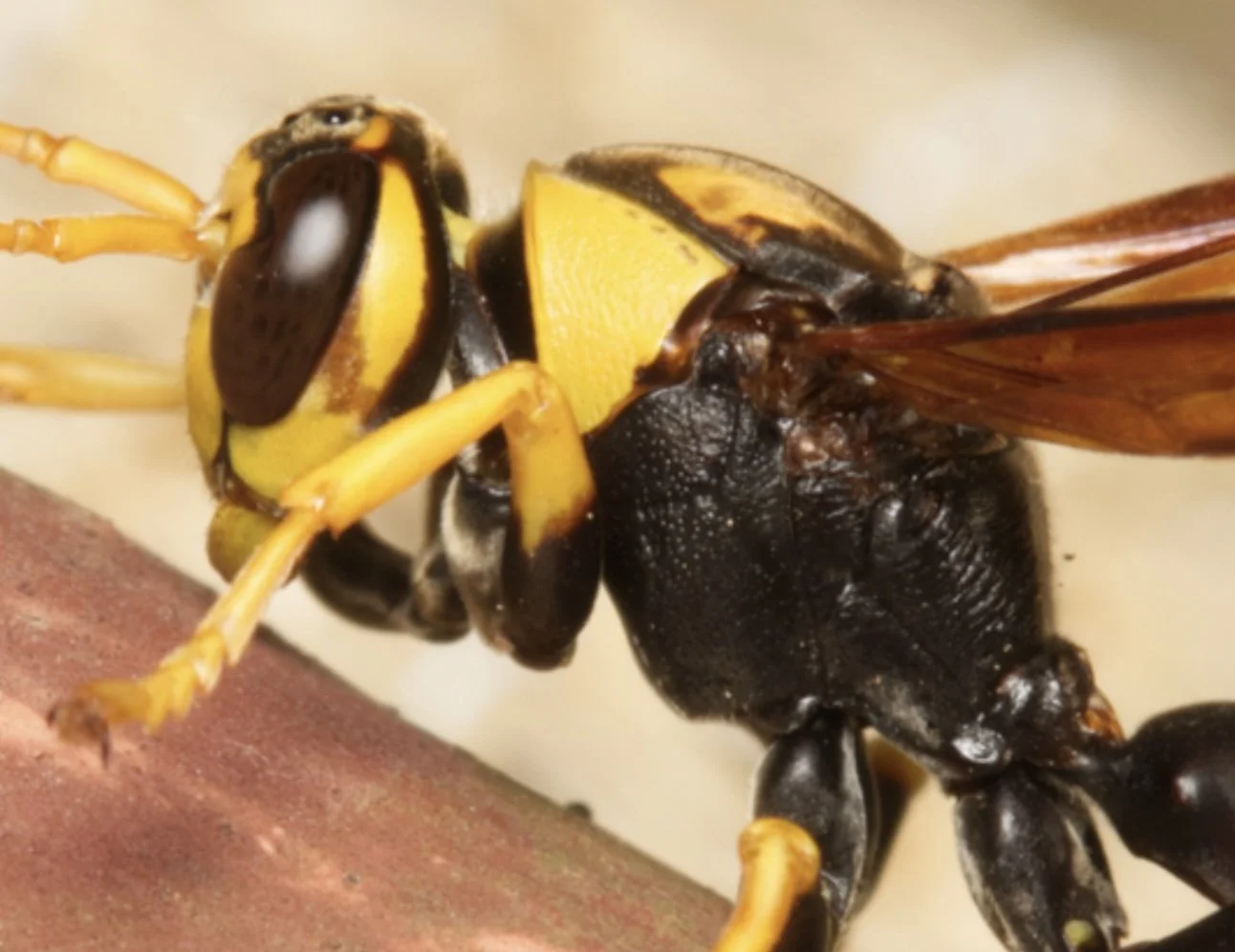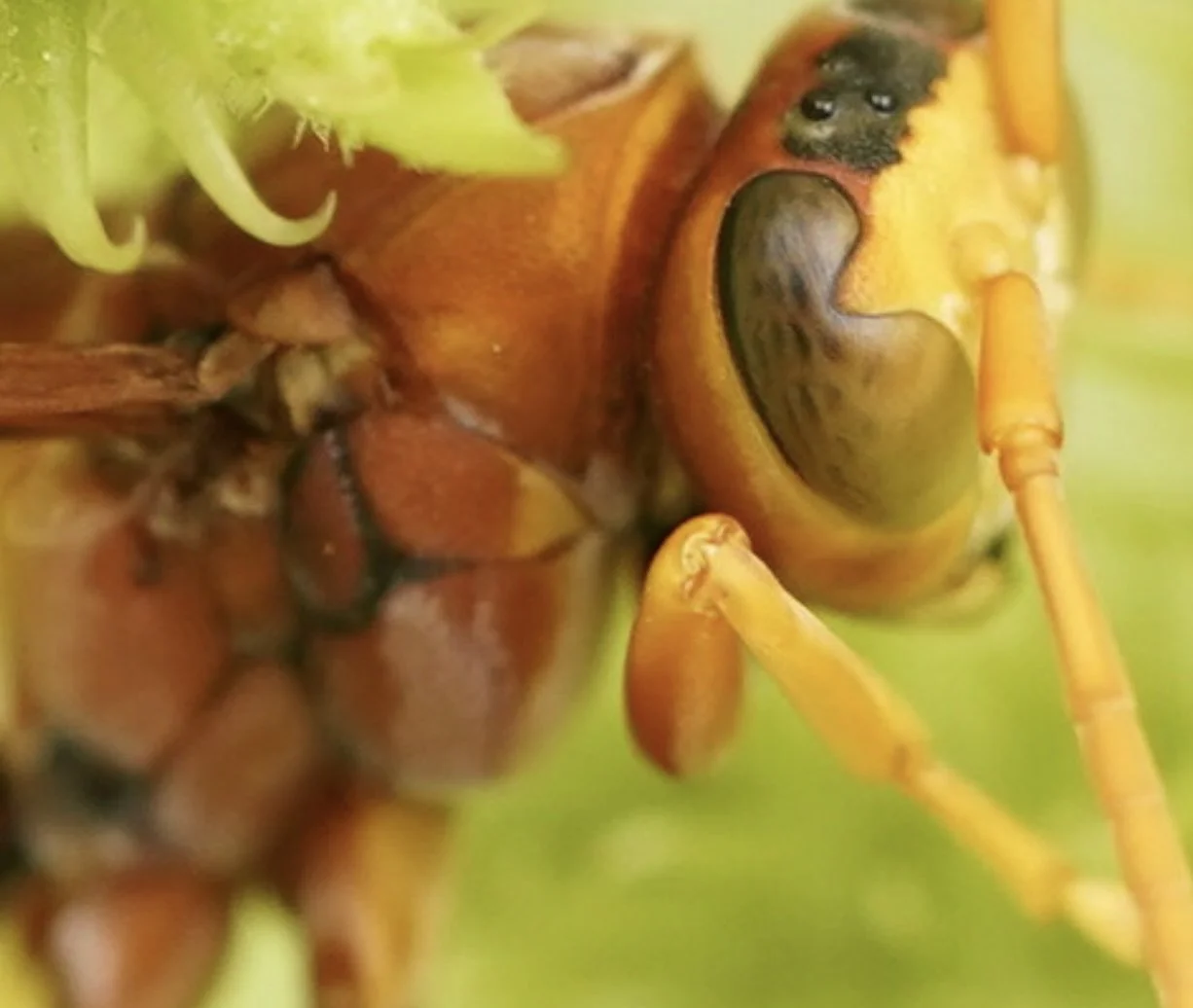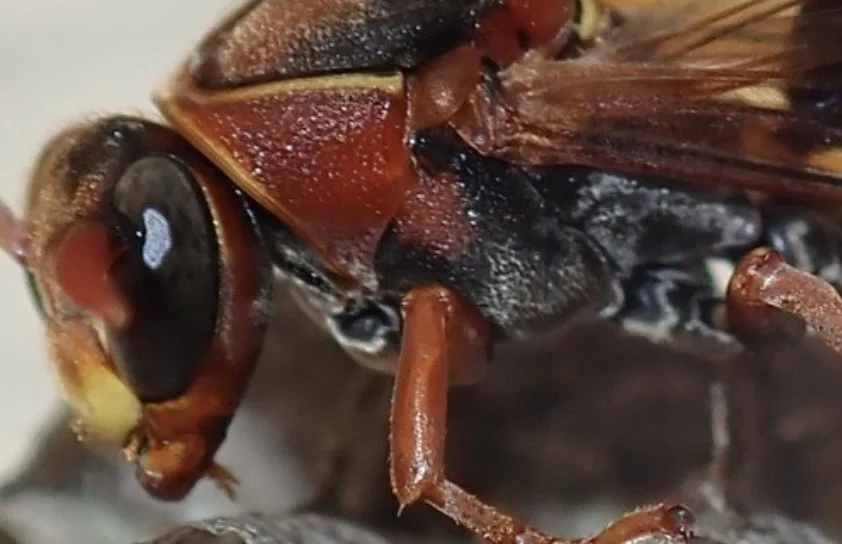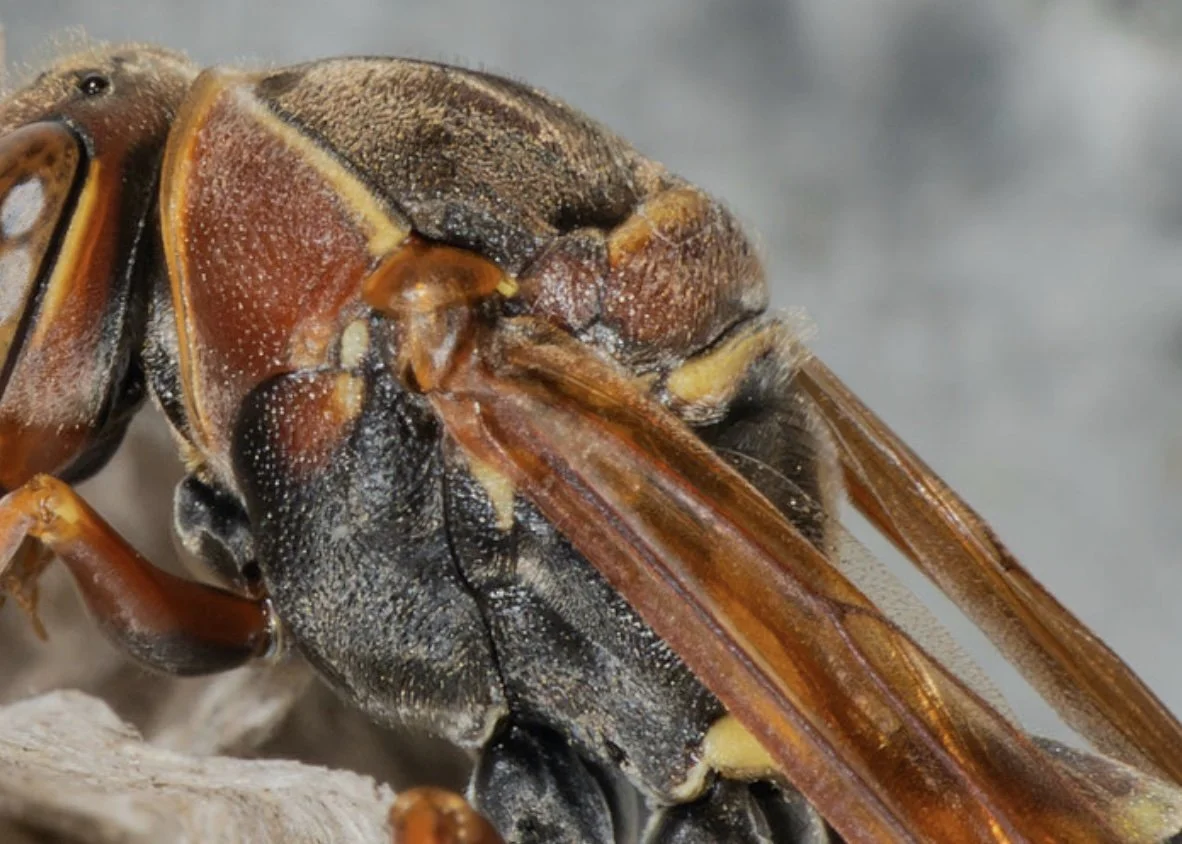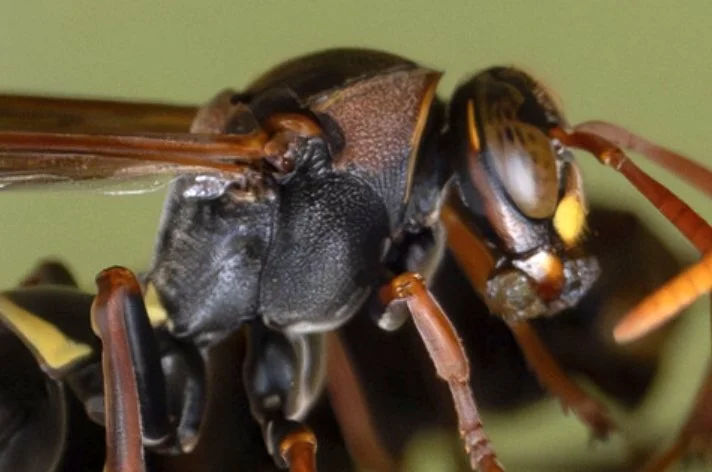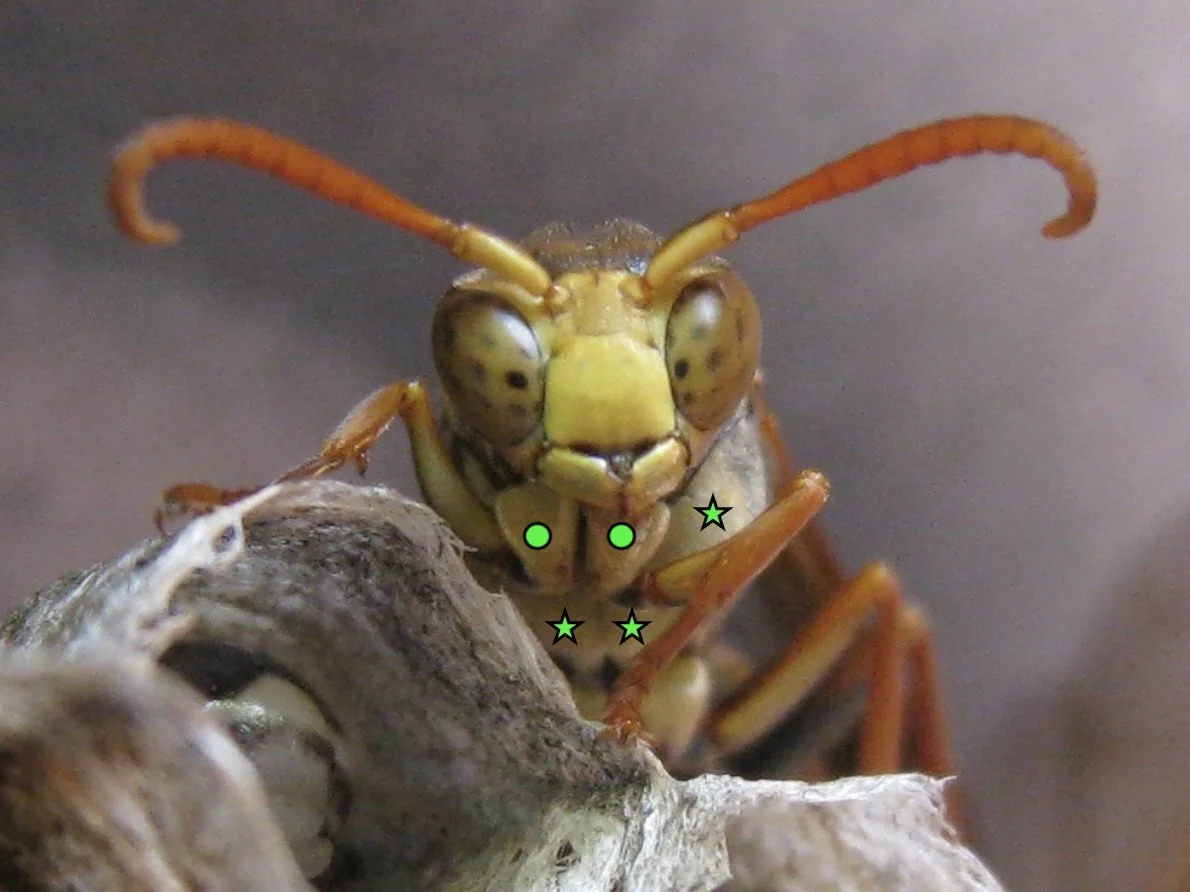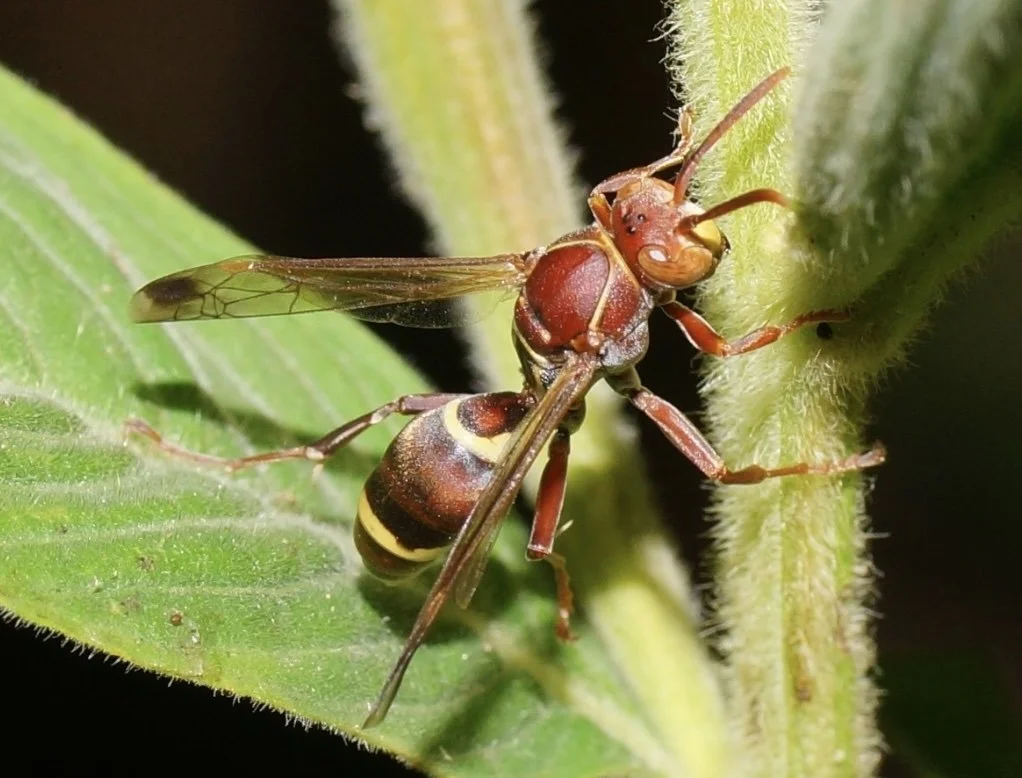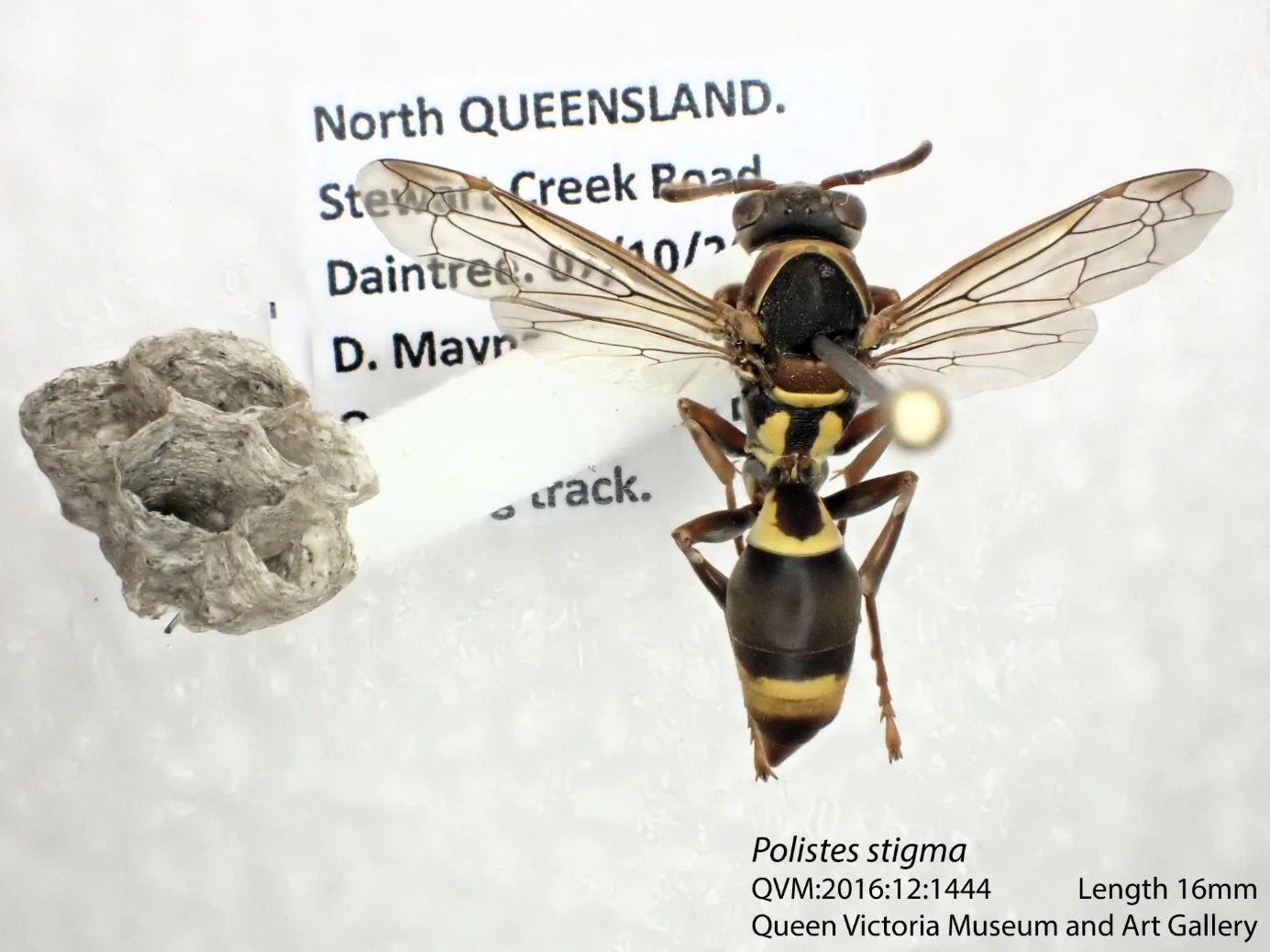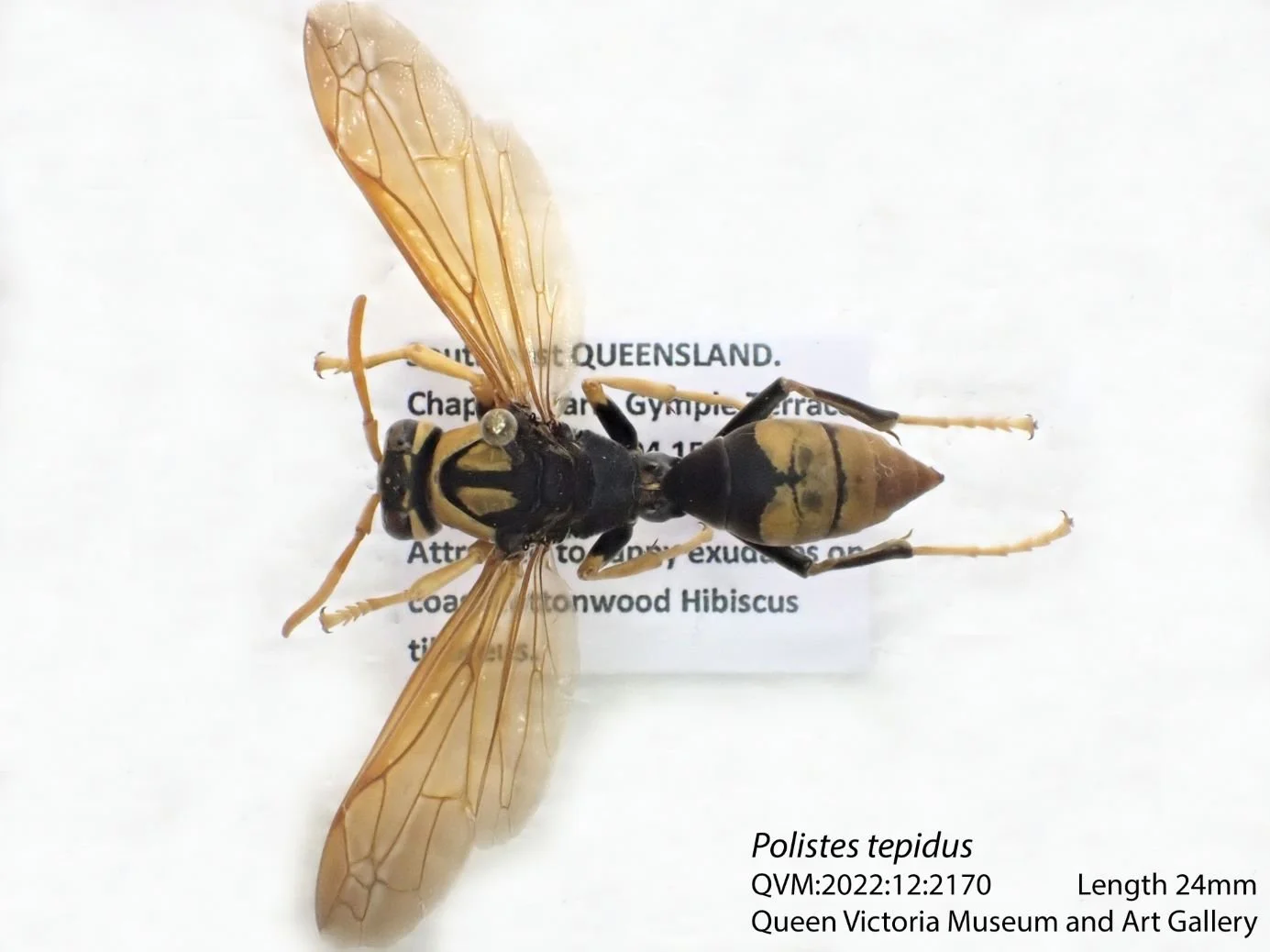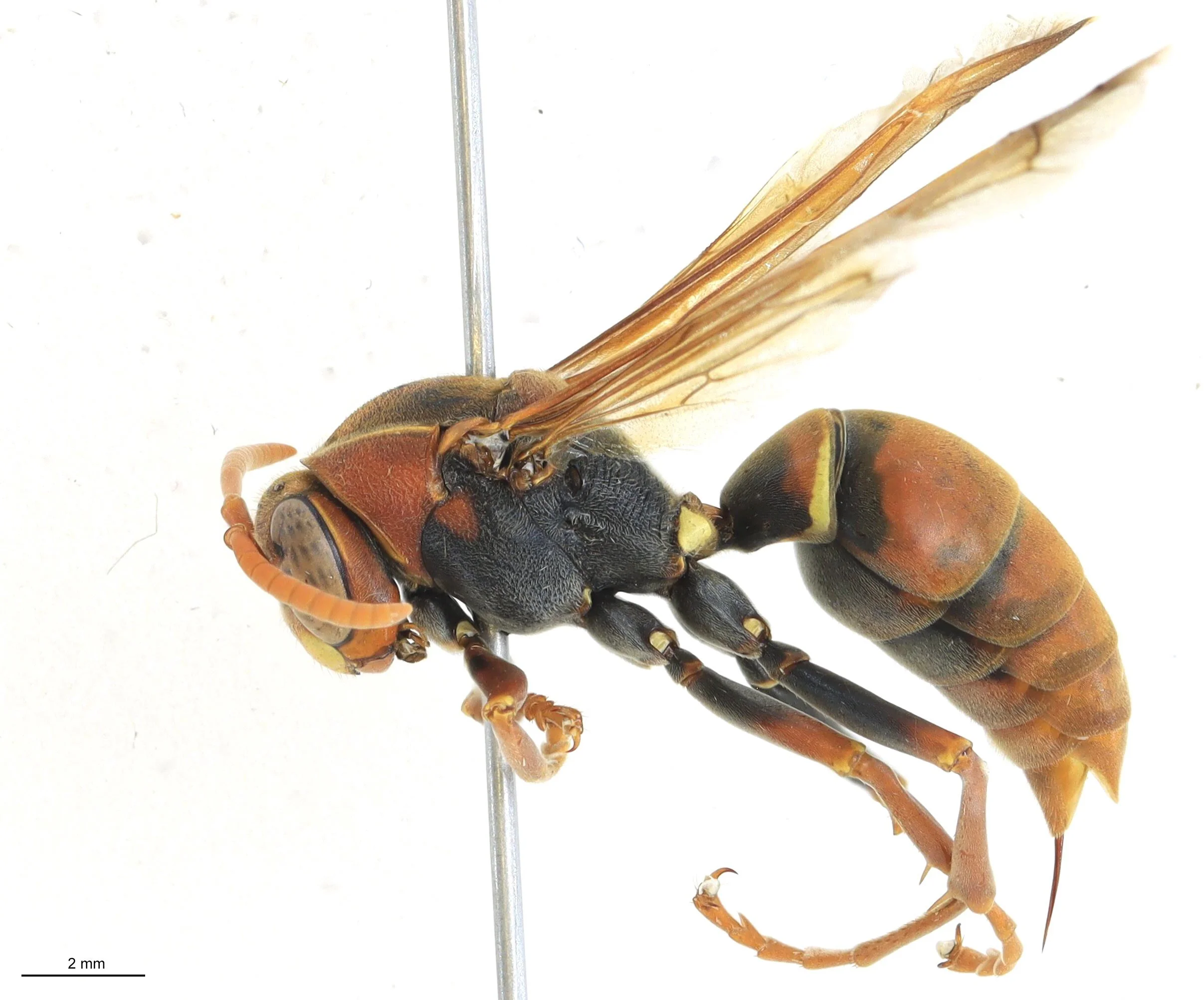Polistinae of south-eastern Australia

Workbook
Responding to a prompt from a fellow iNaturalist contributor, I’ve been taking a closer look at paper wasps of south-eastern Australia. Can we reliably separate species from field photos? And specifically, are the Ropalidia sightings south of around Port Macquarie (latitude ~32ºS) being correctly identified? Might the common, tropical species R. revolutionalis be moving south … or are sightings of R. plebeiana (widespread in the south-east) simply being mistaken for R. revolutionalis?
The Polistinae are largely tropical in distribution. Only a handful of species are known from NSW, with even fewer from the southern parts of the state. So perhaps a doable project, and certainly worth a shot.
INTRODUCTION : list of Australian species in the subfamily Polistinae; schematic showing how to distinguish Ropalidia from Polistes; annotated figures showing morphological structures and the terms used.
PART ONE - Ropalidia: summary descriptions (matrix) for the six species known to occur in south-eastern Australia; field photos as examples (linked to iNaturalist observations); structural differences between three otherwise similar-looking species; field photos of nests.
PART TWO - Polistes: summary descriptions (matrix) for the five species known to occur in south-eastern Australia; field photos as examples (linked to iNaturalist observations); discussion of the challenge of within-species variability; some key characters to help distinguish between otherwise similar-looking species.
END NOTES: limitations of distribution data; extracts and images published elsewhere (e.g. museums; BOLD); species of northern Australia, starting with the Northern Territory / Darwin region; reference list.
INTRODUCTION
Ropalidia and Polistes of Australia
Polistinae is a subfamily of Vespidae and in Australia includes just two genera: Ropalidia and Polistes. The only other social wasps in Australia are the introduced Vespula (subfamily Vespinae), which includes the locally notorious ‘European Wasp’, Vespula germanica.
There are currently 34 Australian species of Polistinae listed on AFD. The most recently described species are attributed to the major review of Australian social wasps undertaken by O.W. Richards (1978). Much of what I’ve summarised below is based on that publication.
The highest species diversity is found in Queensland, the Northern Territory, and northern Western Australia. According to Richards (1978), Ropalidia plebeiana “seems to be the only common Ropalidia in south-eastern Australia” (p. 79). The Polistes fauna is similarly depauperate in the south. The widespread Polistes humilis is perhaps the most commonly sighted of the five species known to occur south of the QLD-NSW border.
PART ONE
Southern Ropalidia species
The table below lists some of the characters for each of the species known from NSW or further south. The emphasis is on features that might be visible in field photos.
A few examples from iNaturalist
These images illustrate some of the identifying features. They may assist in ‘photo matching’, but it is advisable to refer also to the matrix above.
When colour alone is not enough
The striking … and strikingly distinctive! …. colour patterns of R. romandi, R. socialistica, and R. impetuosa are often all that is needed for a convincing ID. The same cannot be said for the remaining three southern candidate species. R. plebeiana, R. revolutionalis and R. gracilenta are all dark coloured wasps, with more limited and variable yellow markings. For these species, differences in body shape and nest structure provide key clues to identity.
The shape of the first two metasomal segments is distinctive in R. gracilenta. It also differs between R. plebeiana and R. revolutionalis, although the distinction is not quite so obvious. [refer Figures 15-22 in Richards (1978), extract included in the ‘Bits & pieces’ section at the end of this page.]
A second structural clue is the shape of the pronotal keel, laterally. Is it high, sharp and angled (R. plebeiana), sinuous (R. revolutionalis), or smoothly curving and long (R. gracilenta).
Refer to the summary table above for details.
Nest architecture
Polistinae are eusocial wasps. There is a usually only one actively reproductive female at any one time, although this varies and some species regularly include multiple such ‘queens’ or ‘gynes’. The workers are female and are largely indistinguishable from the gynes. Workers share in nest construction, and in the care and feeding of the young. Males are often seen at the nest among the workers, but they rarely contribute to the nesting activities (Kojima 1993). They are simply looking to mate.
The size, shape, and location of the nest varies between species. It is particularly helpful for distinguishing between Ropalidia species of temperate Australia.
Refer to the summary table above for details.
Female or male?
The sex differences within the Ropalidia species above are comparatively slight. Males are generally similar to females in body colour and structure … but with some differences. Males often have more extensive yellow markings on the face and underside of the thoracic segments (‘sternites’). Blackened areas may be more extensive. The antennae may be modified, and the gastral segments differ in their proportions.
So before colour-matching a wasp to determine its species ID, it is helpful to check its sex.
Fortunately, when comes to differentiating males and females, there are two reliable differences that are useful for field photos: the number of antennal segments, and the number of visible metasomal tergites.
Adult males observed at nests are almost certainly on the lookout for emergent females with which to mate.
PART TWO
Southern Polistes species
The table below lists some of the characters for each of the Australian species known from NSW or further south. The emphasis is on features that might be visible in field photos.
A few examples from iNaturalist
These images illustrate some of the identifying features. They may assist in ‘photo matching’, but it is advisable to refer also to the matrix above.
I have also included images of two (sadly) common, introduced species of Polistes. Just for reference. Neither could be mistaken for any of the locals.
Variation and uncertainty
As with Ropalidia, some Polistes species of the south-east are readily identified by their colour. Polistes erythrinus is distinctively dark, the reddish areas almost crimson. Polistes tepidus is strikingly marked with black and orange-yellow. But beyond that, things can get a bit tricky.
Before coming back to the features I'm finding most helpful, let me detail the challenges.
Variability (and overlap) in colour
The differences between Polistes species is largely based on colour – both hue and pattern. Yet Richards also details the high variation within species. This variability is even seen within described subspecies! For example, P. humilis humilis ranges from extensively black through to entirely ferruginous, the number of yellow gastral stripes none, one or sometimes more.
Even more problematic is the high similarity between particular colour morphs of different species. There are examples of almost entirely orange wasps among P. humilis humilis, P. humilis synoecus, and P. schach. A wasp with extensive yellow bands on the gaster and propodeum might be P. humilis synoecus or P. stigma townsvillensis. Indeed, even published researchers have disagreed on the distinctions between these two taxa. No wonder I'm finding it a challenge! And perhaps this morphological similiarity should be no surprise. Molecular studies indicate that, along with the North Queensland species P. variabilis, P. humilis and P. stigma are closely related (Santos et. al. 2015).
Structural differences are slight
Beyond colour, are there any clues that can be used in species ID from field photos? Yes, some. For distinction between particular species pairs. Applicable to select photos.
Even authors specifically seeking structural differences have uncovered only fine distinctions (Kojima & Carpenter, 1997), most of which require having the specimen in the hand. So not always helpful for identification from even the highest quality photos.
The questionable validity of subspecies
In highly variable species, how meaningful are subspecies distinctions? Richards (1978) upheld two subspecies of P. humilis, collapsing several of the divisions proposed by Giordani Sioka a few years earlier. However, the taxonomic merit of such subspecies has been challenged. In the 1996 catalogue of Polistes, Carpenter writes:
“With respect to the use of the subspecies category, I agree that it has no place in a phylogenetic system: species-group taxa that can be diagnosed are species (Nelson and Platnick, 1981; Nixon and Wheeler, 1990). But this means that taxa currently recognized as subspecies are either species or synonyms, and moreover there must be a mixture. Without careful study on a case by case basis, the proper status of subspecific taxa cannot be determined. I have applied this approach elsewhere to some groups of Vespidae (Carpenter, 1988; Carpenter and van der Vecht,1991), Archer (1991, 1992, 1994, 1995) has done so for various species of Vespa, and Snelling (1983) has followed this course for a few species of Polistes. Until such studies can be undertaken for Polistes, I am unwilling to proceed with wholesale changes in status of subspecific taxa. Furthermore, I believe that such changes are best done as part of a revision, rather than in a catalog or checklist, so that adequate explanation of each decision may be supplied.” (Carpenter 1996, p. 2).
Three decades on, and the situation remains unchanged. In their latest cataloque of Australian social wasps, Carpenter and Brown (2022) retain both P. humilis humilis and P. humilis synoecus.
So ... we do what we can. Both subspecies are listed on iNaturalist, and in many cases the assignment of a particular observation will unquestionably align best with a particular subspecies. This is most convincing for the darker variants of P. humilis humilis. However, for the more ambiguously marked examples, I suggest we leave them at species level.
A few particularly useful features
Despite the uncertainty elucidated above, I am finding the following features quite helpful in differentiating between similarly-coloured species.
Head shape
Although there is little mention of this feature in Richards (1978), I have found head shape a useful and quite reliable clue in separating the two subgenera, at least as far as the five southern Polistes species are concerned. This can be particularly valuable for extensively black individuals (where they might be P. erythrinus or P. humilis) or entirely ferruginous ones (where they might be P. humilis or P. schach).
Just for the record, Richards (1978) does include the following in the description of P. erythrinus:
"Gena as wide as eyes, margin strong to near bottom of eye, then evanescent. Malar space 1.5X times as long as height of antennal socket, it and the adjacent gena distinctly punctured." (Richards 1978, p. 15).
The author also states that P. schach & P. tepidus are structurally similar to P. erythrinus.
Pleura – structure and colour
The mesopleuron is a large structure, at least partially visible in most photos. And although the colour varies somewhat within species, it is particularly helpful in recognising P. stigma townsvillensis.
There is a also structural difference between the two subgenera, although these features can be difficult to capture in field photo.
Mesosternum colour in males
Male Polistes are a common sight perched atop the umbrella of the nest comb, particularly later in the breeding season. And when so perched, they display the underside of the thorax to good effect!
The colour of the mesosternum and the front coxae is particularly useful for distinguishing between the Polistella species. They are yellow in P. humilis, in contrast to black or ferruginous in P. stigma townsvillensis.
Gaster shape
One final structural difference is worth mentioning, although it is difficult to apply in most field shots. The first gastral segment in P. stigma townsvillensis is longer and less steeply rising in profile than P. humilis.
Known range
Might I use distribution data to help with identification? Richards (1978) states that the most southern collection site for P. humilis synoecus was Abernethy (32º54’S). So perhaps brightly coloured Polistella of southern NSW could be considered P. stigma townsvillensis. Maybe. But I would be wary of relying upon distribution alone. Read on …
END NOTES
A cautionary note re distribution data
It is important to remember that published location data is an imperfect measure of a species’ range. Such collection data simply tells you where a species has been found, at some time in the past. Not all areas of the country are sampled evenly. Far from it! And species distributions can change with time.
In compiling a list of candidate southern species, I’ve included all species collected from anywhere south of the NSW-QLD border in eastern Australia (based on Richards’ 1978 large scale revision). Included are all species with a listing in NSW, Victoria, or SA. I excluded those known only from QLD, NT, WA. There is no convincing evidence of any native Australian Polistinae in Tasmania (Richards, 1978).
This list may therefore be incomplete for northern NSW. Species well-known around highly populated regions in south-eastern QLD often go undetected in nature reserves and rural areas just south of the border. And with climate change, southern shifts in distribution are likely.
So I advise caution when using the above notes and matrices to identify paper wasp sightings north of, say, Port Macquarie. If a good match cannot be found in the matrix, it may well be an unlisted ‘QLD’ species.
From Port Macquarie, south, the list should hold up quite well. Indeed, a more recent review of Ropalidia distribution records for temperate Australia (Saito & Kojima, 2005a) found that R. plebeiana is the only Ropalidia found south of latitude -30ºS.
Bits & pieces
A miscellaneous collection of extracts from relevant publications and identified specimen images from museums or related organisations (e.g. PaDIL, BOLD).
What about up north?
In a first step towards familiarising myself with the species in northern Australia, I’ve taken a look at the Darwin area. Two of our southern species occur there (P. humilis synoecus & P. stigma townsvillensis), so what I learn from reviewing these more broadly will also refine my analyses closer to home. And it turns out the list of candidate species in and around Darwin is short. Manageable.
I will probably tackle Polistes of Queensland at some point. So many wasps, so little time ;)
References
Cardale, J.C. 1985. Vespoidea and Sphecoidea. Zoological Catalogue of Australia, 2: 150–303.
Carpenter, J.M. 1996. Phylogeny and biogeography of Polistes. In: Turillazzi, S. & West-Eberhard, M.J. (Eds.), Natural History and Evolution of Paper-Wasps. Oxford University Press, Oxford, pp. 18–57.
Carpenter, J.M. 1996. Distributional checklist of species of the genus Polistes (Hymenoptera, Vespidae, Polistinae, Polistini). American Museum Novitates, 3188: 1–39.
Carpenter, J.M. & Brown, G.R. 2022. Catalogue of the Australian social wasps (Hymenoptera: Vespidae). Zootaxa 5214(4): 451–495
Hook, A.W. & Evans, H.E. 1982. Observations on the nesting behaviour of three species of Ropalidia Guérin-Méneville (Hymenoptera: Vespidae). Journal of Australian Entomological Society, 21: 271-272
Itô, Y. & Higashi, S. 1987. Spring Behaviour of Ropalidia plebeiana (Hymenoptera: Vespidae) within a huge aggregation of nests. Applied Entomology & Zoology, 22(4): 519-527
Kojima, J. 1993. Feeding of larvae by males of an Australian Paper Wasp, Ropalidia plebeiana Richards (Hymenoptera, Vespidae). Japanese Journal of Entomology 61 (2): 213-215
Kojima, J. .1999. A key to species and notes on distribution of the polistine genus Ropalidia Guérin-Méneville, 1831(Hymenoptera: Vespidae, Polistinae) in Australia. Entomological Science, 2: 379–390.
Kojima, J. & Carpenter, J.M. 1997. A taxonomic note and nest description of an Australian paper wasp, Polistes variabilis (Fabricius) (Hymenoptera, Vespidae, Polistinae). Japanese Journal of Systematic Entomology, 3 (2): 117–122.
Richards, O.W. 1978. The Australian social wasps (Hymenoptera: Vespidae). Australian Journal of Zoology Supplementary Series 61: 1-132
Saito, F. & Kojima, J. 2005a. Colony cycle in the south-eastern populations of Ropalidia plebeiana, the only Ropalidia wasp occurring in temperate Australia. Entomological Science 8: 263-275
Saito, F. & Kojima, J. 2005b. Taxonomy and biogeography of Australian species of the Ropalidia stigma group and R. variegata group (Hymenoptera: Vespidae). Entomological Science, 8, 179–188
Santos, B.F., Payne, A., Pickett, K.M. & Carpenter, J.M. 2015. Phylogeny and historical biogeography of the paper wasp genus Polistes (Hymenoptera: Vespidae): implications for the overwintering hypothesis of social evolution. Cladistics, 31: 535–549.
This is a workbook page … a part of our website where we record the observations and references used in making species identifications. The notes will not necessarily be complete. They are a record for our own use, but we are happy to share this information with others.
